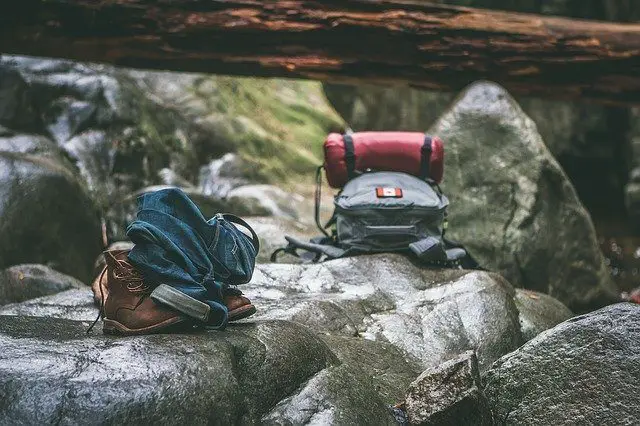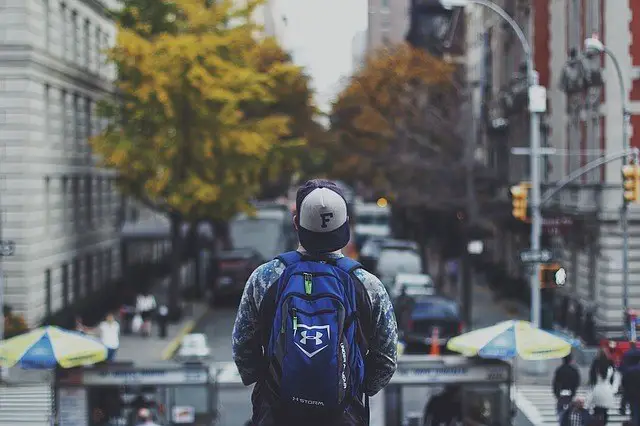How To Pack A Backpack (Guide For Hiking, Travel & More)
Traveling, going camping, or backpacking is a fun and exciting experience. Discovering new things, meeting new people, and experiencing new places are just some of the reasons why many people get the travel bug. However, one thing that stresses us out is packing our trusty backpack.
Backpacks are an essential traveling tool. They come in many different sizes and materials that can provide you easy access to essentials like your passport, snacks, medicine, or tools like flashlights and battery packs. But how do you know what to put inside your backpack? More importantly, how do you pack a backpack for travel without forgetting all the essentials?
A Backpack’s Storage And Their Uses
Backpacks come in many different styles, so it’s pretty easy to find one that suits your purpose. For example, there are backpacks designed for school consisting of a main compartment, usually with a laptop sleeve inside, a front pocket, and two side pockets on the outside for storing water bottles. However, like those used for hiking and backpacking, technical backpacks typically contain more storage compartments for all your travel equipment.
Here are some examples of backpack storage and how you can use them effectively;

How To Pack A Hiking Backpack
When you’re going hiking, preparation is key. Make sure not to forget the essentials because there are no convenience stores out n the wild should you discover that you forgot to bring the spare batteries for your flashlight. This guide won’t go into the specifics of selecting a bag, but you can read our hiking backpack reviews in this detailed article.
Start by creating a checklist of the things you need to bring with you on your trip. The checklist will depend on the weather during your trip. If it’s going to be cold, you should have long sleeves and other items that you can layer to stay warm.
Start by packing the bottom of your pack. This part is ideal for storing items that you will need for later when you’re in camp. For example, blankets, a change of clothes, food, camp shoes, and other gear that you don’t need to access immediately.
Next, pack the middle layer. This area is for storing things that you need while hiking to your location. For example, food (meals, not snacks), a cooking kit, and other bulky items can be stored in the middle.
The top layer is reserved for items that you need immediate access to. This area is suitable for first aid kits, rain jackets, and toiletries.
A few tips:
Check out this easy-to-follow video on how to pack your backpack correctly for a hiking trip.
How to Pack a Backpack for Travel
Traveling is no different from hiking when it comes to packing. The best travel backpacks make the whole process of traveling much more comfortable, thanks to their convenient features.
Just like hiking, you need to start with a checklist so that you don’t over-pack or forget anything. If it’s for a business trip, you need to pack clothes that won’t crease so that you look presentable during meetings. A checklist can also help you determine how many clothes you need to bring.
To begin, pack items that you don’t need to use immediately on the bottom. For example, you can put shoes, pyjamas, or extra socks in first.
Next, place your clothes in the middle of the pack. This area is also suitable for storing your toiletries, medicine, or first aid kit.
Lastly, your top layer can be used to store items that you need easy access to, like your charger, Kindle, or book.
If your backpack has a main pocket, you can use it to store snacks, passports and travel documents, or your cellphone.
Here are some tips to make sure you don’t over or under pack.

How to Pack For School
Here’s how you can become an efficient school backpack packer.
Identify which books you need for the day by looking at your schedule. This helps to keep your backpack light and keep you organized.
Store your laptop in the laptop sleeve, which will keep it protected.
Organize your bag with the heaviest item closest to the back panel for better stability. The lightest items can be placed in the front.
Keep your sports gear in a separate string bag. Place it at the top of your pack so you can quickly put them inside your locker when you reach school. You can use the bag to store dirty PE clothes to keep separate from the rest of your equipment.
The front pocket of your backpack can be used to store wipes, hand sanitizers, and snacks.
Backpack packing tips for parents and students:
People Also Ask (FAQs)
Is it better to roll clothes or fold?
It really depends on the clothing. Rolled is suitable for t-shirts, jeans, pants, pajamas, or casual dresses. However, bulky items like sweaters will only take up more space when rolled. Dress shirts also wrinkle more when rolled, so they are better off folded.
What is a good size for a daypack?
According to the experts, 21–35 liters is the sweet spot for a daypack. This should give you enough space for clothes, food and a camera for your day trip.
Can you pack shoes and clothes in your carry-on backpack?
According to TSA, you can carry your shoes in your backpack if you’re flying carry-on only. If you’re checking in other luggage, they might ask you to store your shoes inside the other bags to save space in the cabin.
Conclusion
Learning how to pack for a backpacking trip or how to pack your backpack for school is very important. This life hack can save you from a sore back, overstuffed luggage and can help extend the lifespan of your backpack.
Packing your backpack correctly will allow you to carry more, but most importantly, give you easy access to your equipment when you need it most.
